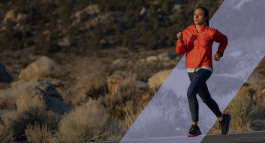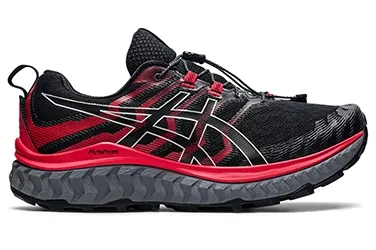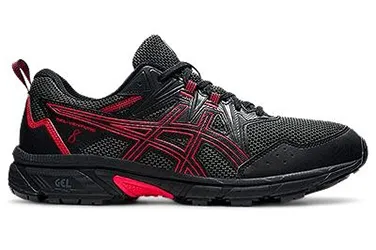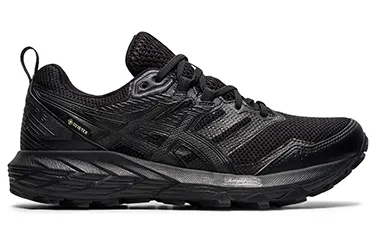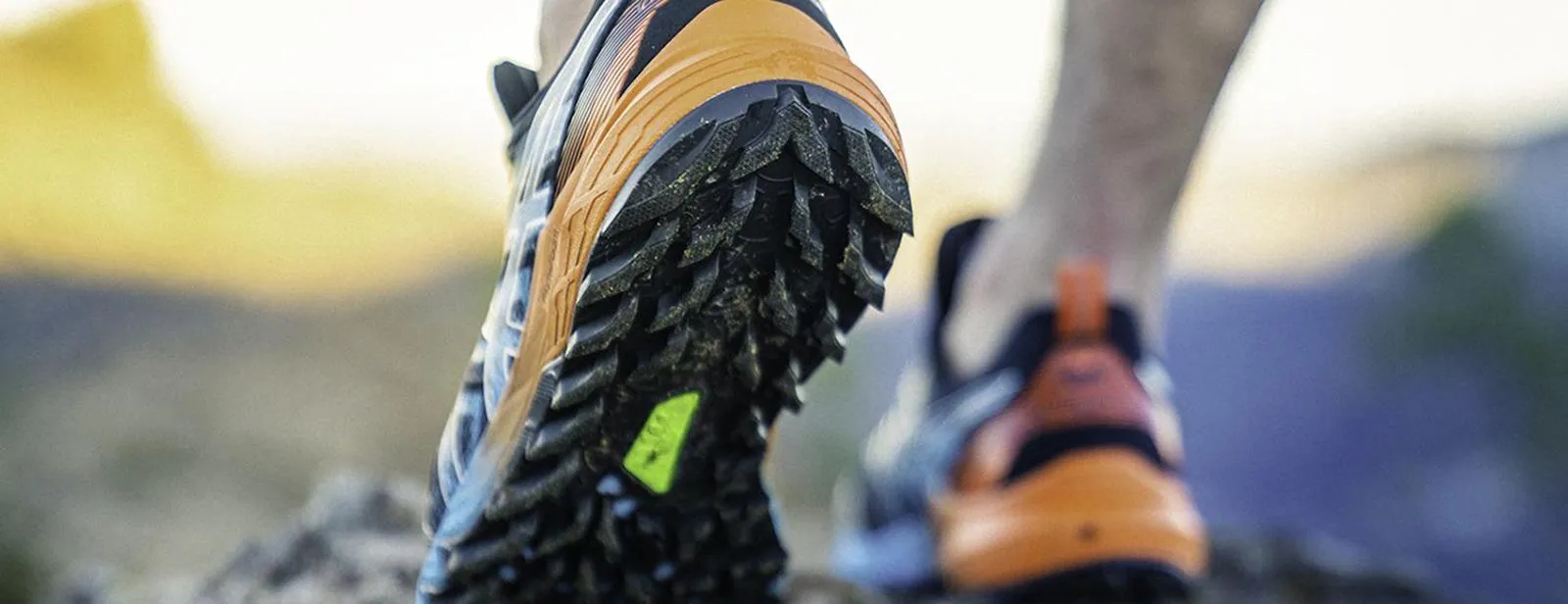
Trail Running Shoes: When You Need Them & How to Choose the Best Ones for You
October 26, 2021
Choosing the best trail running shoes is personal and will be specific to your foot, and the terrain that you normally visit.
Not all trail shoes are made the same, and while the differences can be subtle, they can make a big impact on the comfort you experience and performance you achieve. The shoe you choose should support the activity you are undertaking, whether it be a rugged mountain hike or a smooth running trail, while also taking into consideration your natural foot movements and support level needed.
When do you need trail running shoes?
You’re probably here because you’ve thought to yourself “Do I need trail running shoes?”. The decision to switch from your regular road running shoes to a specialised trail running shoe is going to depend on the frequency you’re using them off-road and the ruggedness of the terrain.
When deciding whether you need trail running shoes, consider the following:
1. You’re running off road more than a few times per week
How many kilometers do you run off road each week? If the answer is more than a few, or more than one short trail or mixed road/trail run per week, it's a worthy investment. Trails can prematurely wear out your normal running shoes, designed for smooth surfaces like the road. Purchasing a pair of trail running shoes can save you money and provide you with a better run.
2. You often run on muddy or rocky trails
What kind of trails do you usually run? If the soil is soft, muddy or full of uneven surfaces, then it is worthwhile wearing trail or mud running shoes as they offer better traction and may even prevent a fall.
3. Your current shoes offer minimal traction
What kind of shoes do you wear now when you run off road? If the soles are relatively smooth, providing minimal traction, again, trail running shoes will provide the performance and safety your "road only" shoes cannot. The traction on specialised trail running shoes is purpose built for rough terrain, to provide additional grip to the surface. Your feet (and whole body) will thank you for making the switch.
What makes trail running shoes different from regular road runners?
There are some main differences between a regular running shoe and a trail running shoe. From purpose-built tractions for different terrains, to material and construction differences to protect your foot from harsher elements and equip you to adapt to unstable surfaces.
Rugged outsole of the shoe for a better surface grip
The outsole is the part of the shoe that contacts the ground and is the most important feature that sets trail running shoes apart from road shoes. All the best trail running shoes have rugged outsoles to grip whatever surface you're on.
Higher protection from elements such as rocks or water
Trail running and mud running shoes should have a level of durability to withstand the elements they'll be put against. Good trail running shoes will keep your feet dry, increase comfortability and help prevent blisters. This is especially valuable on trails where you're more likely to run in mud or through puddles.
Keeping rocks, gravel and other trail debris from slipping into shoes, even if they're a snug fit, is another consideration unique to trail running shoes. Good trail running shoes guard against that possibility, one pebble underneath the heel or ball of one foot can ruin a trail run or race. They do this with features such as a rock plate, which protect the feet against rocks and other sharp objects underfoot, and shoelace tongues fused to the upper, designed to keep debris out of your shoes.
Different construction to keep your feet safe and secure
Not all shoes are made equal, and trail running shoes have been constructed differently to normal running shoes to provide you with the best experience for hiking and running on trails.
Additional movement is needed when running off-road, to allow you to adapt to uneven surfaces like rocky hills, over branches and bushes, and even on wet uneven surfaces. Depending on the terrain you intend to use, you may opt for a trail shoe with less rigidity in the sole, adding more flexibility to help you adapt in uncertain terrain.
The type of rubber used in the sole is important, and the best trail running shoes will use a rubber that provides superior grip, while being able to handle wet and dry conditions. This is a feature unlikely to be found in your road running shoes. It helps to keep your feet secure on the ground – regardless of the conditions.
With branches, rocks, dirt, and water more likely on mountain and bush trails, trail running shoes are constructed with a mesh upper ready to handle additional wear. Depending on the terrain you’re facing, you may opt to consider a shoe with a mesh that helps to repel water, such as trail shoes constructed with GORE-TEX membrane.
Shoelaces come undone more easily on trails because of the twisting, turning and occasional contact with bushes, so ensure that the shoe you choose has laces that won't create problems because they're too long, too short or too slippery. A feature to look for in trail running shoes is a pocket that lets you snugly tuck your laces inside and out of harm's way, or a toggle system that allows you to tighten and loosen your shoes without excess laces quickly and easily.
How to choose the best trail running shoes for you
Now that you understand some of the reasons you may need trail running shoes, let's answer the question: what should you look for when buying trail running shoes?
They have come a long way since a few models began appearing on running store shelves about 25 years ago. More than just exhibiting "aggressive" outer soles, the best trail running shoes also possess other features that make them more compatible with off road running.
Here are four key factors to remember when you’re searching for the best pair of trail running shoes for you:.
1. Consider the kind of trail you like to run on
When choosing the right trail running shoe, consider the types of trails you usually run on. If the local off road trails are fairly smooth, you won't need an outsole with big "lugs," or the extra weight of those protrusions that touch the ground first.
If you run rough trails, you'll need an outsole to match. Also consider the material used; the rubber content should be high to ensure a substantial, durable layer between your feet and the trail.
2. Make sure you choose trail running shoes that have the correct fit
When getting fitted for trail running shoes, look for the shoe to fit to your foot with slightly more room than you would when getting fitted for normal running shoes. The uppers on most trail running shoes are more durable, and sometimes with a water repellent mesh, making them less flexible and less likely to give with time like your normal road running shoes do.
Having your foot measured by a professional and confirming whether you need a shoe with more structure to support pronation should be assessed. Your feet are unique to you and caring for them is important – even more so in a demanding off-road environment.
3. Check the heel drop to prevent discomfort
Heel drop refers to the cushioning underfoot, and how this differs between the heel and toe of the shoe. Shoes with heel drop provide comfort for running, where your heel strikes the ground, needing additional cushioning, while less cushioning as you move onto your toes to push off the ground helps to propel you forward. The greater the heel drop, the harder you’re intending to strike the ground and more propulsion you’re wanting to move forward.
For standard off road walking or light trail running, you might opt for a shoe with minimal heel drop. This will provide you with the cushioning you need, without the price tag of a high-performance shoe.
For off road performance footwear that will be required to take you further, faster, it’s worth considering a trail running shoe with a greater heel drop. This will provide you with the ultimate experience, reducing impact on joints and muscles as you run hills and rugged terrain.
Best recommended ASICS trail running shoes
There are many trail running shoes available, and while there is no ‘best recommended trail running shoe’, there is a ‘best for you’ that you’ll be able to pick depending on your foot and the terrain you’re frequenting.
Top ASICS mountain running shoes
Packed with features for the performance off-road runner, the TRABUCO MAX™ trail shoe improved cushioning and traction while allowing runners to cover more terrain with less effort.
Features:
- GUIDESOLE™ technology helps conserve energy
- ASICSGRIP™ outsole improves durability
- Breathable mesh upper, with 3D printed support
- Gaiter system
- Toggled speed lacing system
Most popular ASICS trail running shoes
A versatile shoe for the great outdoors, the GEL-VENTURE ™ trail shoe is excellent for light hiking, where you might find soft or muddy terrain.
Features:
- GEL ™ technology cushioning
- Re-engineered outsole lugs for better off-road traction
Recommended trail running shoes for soft or muddy terrain
With firm cushioning and a mid range outer sole, the GEL-SONOMA™ G-TX is a versatile shoe for trail runs, light hiking, and off road bush or mountain walks. It’s a popular choice for people making the switch from road running to trail running shoes.
Features:
- GORE-TEX membrane helps repel water
- ORTHOLITE™ sock liner provides soft step-in comfort.
- Solid rubber outsole.
- GEL™ technology cushioning provides excellent shock absorption.
